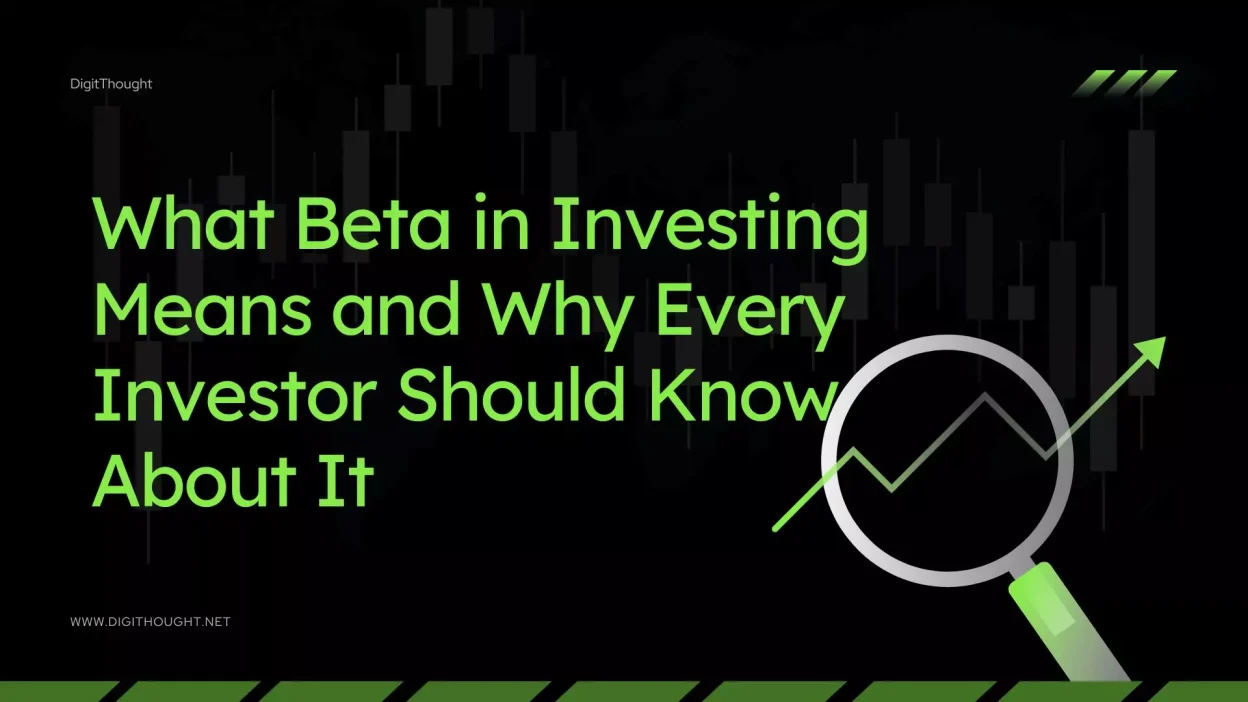Investing can sometimes seem like learning a whole new language. With words like “dividends,” “liquidity,” and “market cap” being thrown around, you may be confused about which concepts to focus on. Here’s one you would not want to miss: beta in investing.
Whether you’re a newbie investor or a seasoned trader trying to make tweaks, beta in investing is a fundamental idea that can play a large part in your decision-making process. But what exactly is beta? And, perhaps most importantly, what does it mean for your investment strategy?
This guide will help you to demystify beta in investing, explain why it is important, and demonstrate how you can use it to make better investment decisions.
What Is Beta in Investing?
Beta is a quantification of how a given stock, or other investment, responds to the market in general. It measures the volatility or risk of an asset compared with the overall market, typically against a benchmark like the S&P 500.
Consider beta “the personality of an investment.” Is it a stolid co-traveler that sails gallantly through market storms, or does it react jarringly to every gust of wind?
Here’s a quick primer on beta and what it means:
-
Beta of 1: The stock and market share the same movement. If the market climbs 10%, the stock is supposed to do as well.
-
Beta over 1: The stock is more volatile than the market. A beta of 1.5, for example, means the stock may rise 15 percent if the market goes up 10 percent (but might also fall 15 percent if the market slides 10 percent).
-
Beta less than 1: The stock tends to be less volatile. A beta of 0.7 suggests the stock could rise only 7 percent for a 10 percent market gain, providing a steadier but less exhilarating return.
-
Negative beta: The stock goes the opposite way from the market. These are in short supply, but they exist within specific sectors, such as gold or countercyclical-ish assets.
Key takeaway: Beta is a snapshot view of a stock’s risk and volatility compared to the broader market. Understanding this can be a way to determine whether a stock belongs in your portfolio.
Why Beta Is Important to Investors
Investors will have varying appetites for risk and they will require clear tools in order to help them ensure that their portfolios are in line with their goals. That’s why beta matters.
Here’s how beta affects some of the most important areas in investing:
Understand Risk Levels
Beta helps you figure out how risky a given investment is. Stocks with a high beta (say, 1.5 or higher) can provide outsize returns, but they also create a greater risk of losses when the market falls. If you’re risk-averse or investing to maintain stability, you likely do better with lower-beta stocks.
Optimize Your Portfolio
Besides giving it to you on individual stocks, beta is critical in constructing a diversified portfolio. Beta diversity can hedge you against market swings. For example, combining high-beta growth stocks with low-beta defensive stocks might serve to offset potential losses and gains.
Measure Video Performance from the Market
And if you want to beat the market, the concept of beta can inform your decisions. A high-beta portfolio may be the source of those above-market returns you crave. But remember, high beta also indicates higher volatility.
Time Your Money as per Your Need
Are you saving for the short term or for the long haul? Beta can also help you put your investments in line with your timeline. Those with a short horizon may appreciate high-beta picks for their volatility, while long-term investors who prefer less risk will no doubt be more at ease choosing among low-beta stocks.
Using Beta from Real World Investment Cases
Example of a High-Beta Stock
Take Tesla (TSLA), a firm that is synonymous with innovation and buzz. Its beta is around 1.9, which is like saying that it’s close to twice as volatile as the overall market. Tesla fits for those who bet on very high growth potential with the risk of amplified losses per market selloff.
Best for: Investors with a high tolerance for risk and short-term traders who can stomach high volatility.
Example of a Low-Beta Stock
Utilities companies such as Dominion Energy (D) are often have betas below 1. They are less affected by market changes and offer stable dividends, and are popular among conservative investors.
Best for: Risk-averse, income-driven investors and long-term stability seekers.
Negative-Beta Investment Example
Gold and some gold-related assets have negative beta, meaning they rise when the broader market falls. ETFs such as the SPDR Gold Shares (GLD) are prime examples.
Best for: Investors to want a hedge against market declines.
The Myths of Beta
Beta has its uses, but it comes with some limitations.
And here are some myths you should steer clear of:
Beta Equals Risk
Even though beta quantifies volatility, it doesn’t sum up all the risk. Other factors, including a company’s fundamentals, trends in its industry, and economic conditions, also come into play.
Beta Predicts the Future
Beta reflects past performance. What caused a stock to have a beta of 1.2 last year isn’t necessarily what will generate a 1.2 beta this year. Always use the beta in conjunction with other tools for thorough analysis.
High Beta Means High Returns
Higher beta also frequently means higher potential returns, but there’s no guarantee of that. Volatility can run in both directions, causing losses as easily as gains.
Using Beta to Build Your Portfolio
The Bottom Line
Want to include beta as an investment strategy? There’s a simple, three-step process.
-
Know Your Risk Tolerance
Figure out how much turbulence you’re willing to endure. If the market’s downturns stress you out, look for low-beta stocks. If the swings in the market make your pulse race, you might prefer higher-beta stocks. -
Analyze Portfolio Beta
Add up the beta values of your individual investments to derive an overall beta for your portfolio. Portfolio trackers or even spreadsheets can help you figure this out. -
Balance Beta with Goals
Move your portfolio beta up or down according to your financial objectives. For example, if retirement is drawing nigh, it may make sense to dial back the beta of your portfolio for a smoother ride.
Moving Your Investment Forward
Beta is just one factor when building an investment portfolio, but it’s a very important one. Once you know the risks and potential rewards of co-signing, you can decide on the best course of action in line with your goals.
Want to learn how to become a successful investor? Benefit from the power of beta, combined with such things as company fundamentals, sector analysis and market trends, to create a smart, diversified portfolio.
Because, regardless of your level of investing experience, every investor can gain from knowing the why behind their choices. With Beta, you have the transparency to invest with greater confidence.
If you want to learn more, read this: What Does Beta Mean for a Stock? An Essential Guide for New Investors



